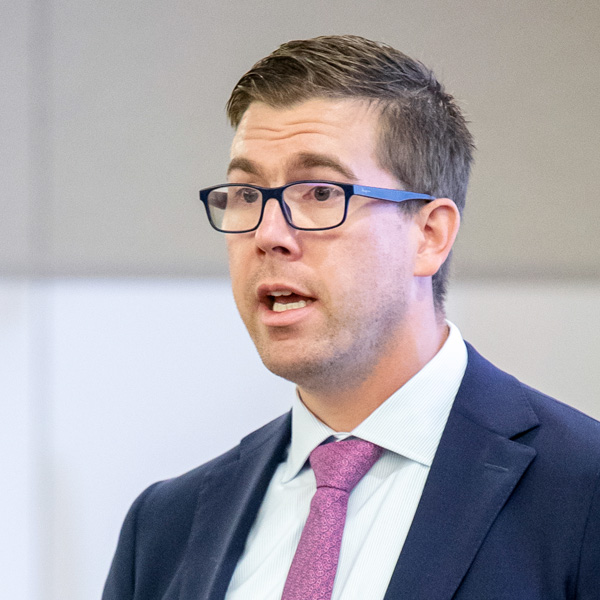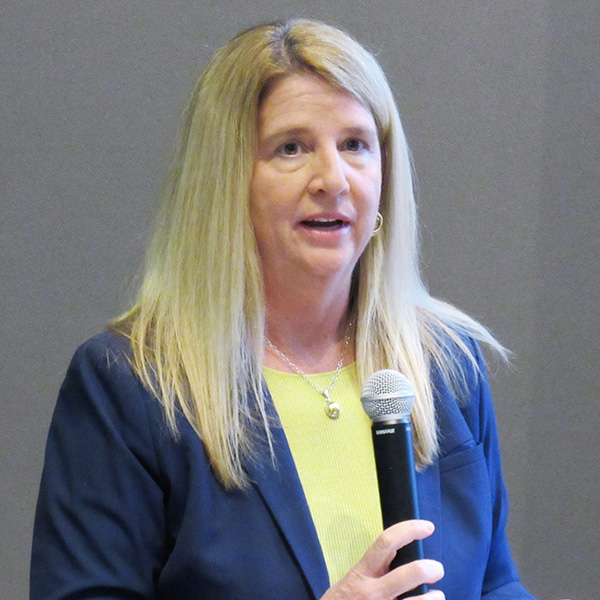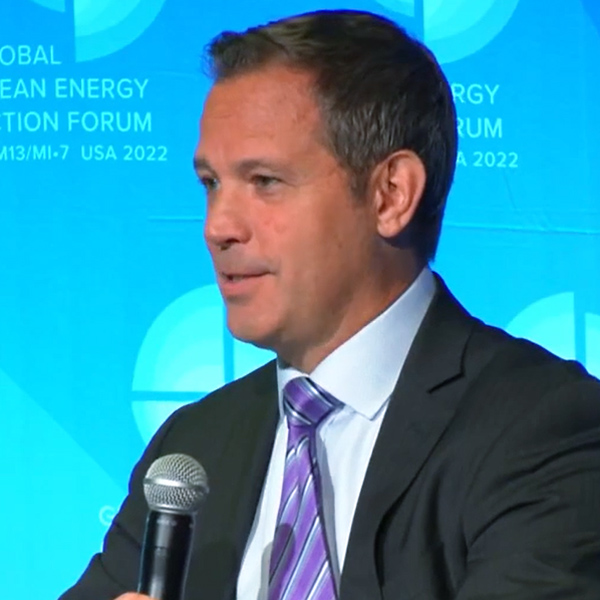Markets and Reliability Committee
Market Seller Offer Cap to Remain at Status Quo
VALLEY FORGE, Pa. — The PJM Markets and Reliability Committee on Wednesday rejected two proposals intended to allow market sellers to represent a greater degree of the risk they take on when entering the capacity market.
The strongest support went to the PJM package, which would have sought to ensure that sellers are able to fully reflect the cost of their Capacity Performance (CP) risk when entering into the Base Residual Auction and provide further clarity around the market seller offer cap (MSOC) review process itself. Nearly 60% of stakeholders supported the package over the status quo, falling short of the two-thirds threshold required.
A secondary proposal, from LS Power, contained many of the same provisions as the PJM language, while also allowing sellers the opportunity to seek a must-offer exception after they get their MSOC numbers from PJM. Those suggested revisions received 57% support.
When the issue was last discussed by the MRC during its July 27 meeting, load interests had voiced their concerns over the impact the language could have on capacity prices. (See “Discussions Continue on Market Seller Offer Cap,” PJM MRC Briefs: Aug. 24, 2022.)
Independent Market Monitor Joe Bowring said the current MSOC structure already allows sellers to fully reflect risk when entering the auction. “PJM’s proposal would significantly change the definition of the offer cap based on avoidable costs because the proposal would not permit net revenues to offset the” CP quantifiable risk, he said.
Bowring also pointed out that PJM’s proposal would significantly change the review process and permit it to take on a market monitoring role. “There is no reason to change the substance or process associated with the capacity market offer caps that are designed to prevent the exercise of market power and will operate effectively to prevent the exercise of market power.”
Generation owners spoke in favor of both proposals, saying that the MSOC as it stands doesn’t reflect the true cost of their risk. Jason Barker, of Constellation Energy, called the revisions a set of much needed reforms to the capacity market.
“The most important thing to take away is that this proposal aids in having market sellers provide an accurate assessment of their capacity risk,” he said.
Paul Sotkiewicz of E-Cubed Policy Associates said the packages came with the potential to make it more attractive for renewable energy resources, which face greater CP risk, to participate in the capacity market.
“I think we would see much more of those resources participate in [the market] … if they were able to reflect those risks in their [market] offer,” he said.
MRC Secretary Dave Anders said the MSOC deliberations have held much of the Resource Adequacy Senior Task Force’s attention over the past year, with two different attempts to address the topic — just one of 10 work activities the task force is charged with examining. He said it’s likely that the task force will pivot to focusing on those other issues relating to the capacity market for the time being.
MRC Approves Bankruptcy Revisions
The committee also approved revisions to PJM’s governing documents to strengthen protections for members in the event of a market participant declaring bankruptcy. The proposal will now go before the Members Committee next month.
The changes would clarify language regarding cash deposits and require a participant declaring bankruptcy to address PJM’s rights immediately upon making their filing. The provisions provide that if a party fails to obtain the assurances for PJM, it would provide cause for the bankruptcy court to grant the RTO relief from an automatic stay.
The package would also modify language regarding financial transmission rights, clarifying that they’re entitled to special protections. The FTR market is an area of focus following the default of GreenHat Energy, which cost PJM members nearly $180 million. (See FERC OKs GreenHat Settlements.)
First Read on New Black Start Fuel-assured Generation Classification
The MRC got its first look at a PJM-proposed package of revisions coming out of a yearslong effort to increase the reliability of non-fuel-assured black start resources during a restoration event. The revisions would create a new “fuel assured” category of black start generators that can demonstrate a higher level of reliability through enhanced fuel availability.
The proposal would require that each transmission zone have at least one fuel-assured black start generator and identify regions where additional restoration capability may be required.
The package, drafted with Brookfield Renewable and the D.C. Office of the People’s Counsel, received the endorsement of the Market Implementation Committee and Operating Committee in a joint vote earlier this month, receiving 76% support over a competing proposal from the Monitor, which received 9%. (See Stakeholders Endorse PJM’s Black Start Fuel Reqs Proposal.)
Michael Bryson, PJM senior vice president of operations, said the change would classify 10 to 20 fuel-assured resources out of the approximately 150 black start resources in the RTO’s fleet.
 Dan Bennett, PJM | © RTO Insider LLC
Dan Bennett, PJM | © RTO Insider LLC
Senior Engineer Dan Bennett said each zone already has at least one existing black start generator that qualifies as fuel assured, but there are eight “extreme outliers” in which fuel loss could delay restoration by 10 or more hours. The proposal would increase PJM’s annual revenue requirement for black start resources by about $28.2 million per year.
Intermittent, hybrid and run-of-river hydro resources would be permitted to contribute to black start capability, using historical data to create a calculation with 90% confidence to estimate how much capacity can be expected from them. Their inclusion has been a point of contention with Bowring, who says that black start resources should be guaranteed to be ready to supply their capacity should they be called out during a restoration event.
“It should be 100% confidence level; there should be no doubt about it,” he said.
Bowring said that black start planning should be done regionally by PJM and not zonally; that the RTO’s proposal could cause customers to pay twice for fuel-assured black start; and that transmission owners should not substitute for PJM at any point in the procurement process.
Gregory Poulos, executive director of the Consumer Advocates of the PJM States, said his members have shared many of the same concerns outlined by the Monitor, but PJM has struck a balance between fuel assurance and the cost to consumers in drafting its package.
“Overall, I would say this is one of the best processes where we’ve come together to find a balanced approach in the end,” he said.
Reserve Requirement Study Recommends Raising IRM and FPR
The MRC received a presentation on the preliminary 2022 Reserve Requirement Study results, which recommends increasing both the forecast pool requirement (FPR) and installed reserve margin (IRM) compared to last year’s study. The updated study resets the recommended figures for the next three years and sets a recommendation for 2026/27.
This year’s study results recommend an IRM of 14.9% for the 2023/24 delivery year, up from 14.8% for 2022/23, and a FPR of 1.093, compared to 1.0901. Both figures would continue to fall for the following three years on a similar slope to last year’s recommendations, just pushed out by a year. (See “Reserve Requirement Study Recommends Increasing FPR and IMR,” PJM Planning Committee Briefs: Sept. 6, 2022.)
Both the load and capacity model projections put downward pressure on the IRM and FPR, but those are outweighed by the upward pressure from the capacity benefit of ties. The new model used for this year’s study projects that PJM’s peak load will more closely coincide with the world peak, reducing the ability to import power.
The study also proposed winter reserve targets for the upcoming season, recommending 21% maximum monthly available reserves for December, 27% for January and 23% for February. The targets were set using RTO-aggregate outage data from the 2007/08 delivery year through last year.
The Planning Committee is set to vote on the FPR and IRM in October, after which the MRC and MC would review and vote on the proposal in the following month. The Board of Managers would consider granting final approval in December.
PJM Staff Seek Removal of CT Exception on Load Signaling
PJM staff gave a first read of a proposal to remove an exception that guarantees combustion turbines recover the costs of their actual generation, regardless of their load signal. Lisa Morelli, director of market settlements initiatives, said the rule is a vestigial holdover from when CTs provided a fairly invariable supply of power.
Advancements in turbine technology have given CTs a dispatchable range in their output, but PJM rules have not evolved alongside that, she said. While other generators are compensated for the lesser of either their actual generation or the amount they’re dispatched to provide, CTs currently can remain at their maximum generation and be fully compensated.
Removing the rule, which is codified by a single sentence in Manual 28, would subject CTs to the deviation charges other generators face for straying from their dispatch signal. Morelli said simulations show that uplift payments to CTs were about $1.3 million lower when recalculated without the exception over the eight highest CT uplift days in summer 2021, a 10% drop.
Streamlining Internal NITS Process Under Consideration
The MRC reviewed a set of suggested revisions to PJM’s internal network integration transmission service (NITS) process, which is aimed at streamlining the administrative process for transmission within the RTO’s network. Currently new agreements follow the same process as external, or cross-border, transmission agreements. (See “Issue Charge OK’d on Internal NITS Process,” PJM Operating Committee Briefs: July 14, 2022.)
The proposal would transition internal transmission to an “evergreen” model and remove the expiration dates and rollover notification requirement. The committee will be asked to endorse the package at its next meeting in October.
DR Proposal Brought Before MRC After MIC Rejection
A modified issue charge proposal from CPower, a curtailment service provider, to evaluate the use of statistical sampling for interval-metered residential customers came before the MRC after a similar initiative narrowly failed at the MIC on Sept. 7. Anders said CPower has the right to bring the package to the committee even after the MIC rejection, akin to an appeals process. (See “DR Data Proposal Rejected,” PJM Market Implementation Committee Briefs: Sept. 7, 2022.)
Stakeholders remained mixed discussing the first read, with some preferring that states take the lead on expanding demand response to residential customers and expressing concerns about utilizing statistical sampling instead of collecting data from households directly.
Bowring said that the proposal avoids the real issue of access to the meter data, which are essential to measure the actual impacts of DR.
E-Cubed’s Sotkiewicz said allowing DR to rely on sampling rather than interval meter data would treat one sector unfairly and discriminatorily, given the costs generators face in metering.
Sharon Midgley of Exelon said she was disappointed to see the initiative fail at the MIC and believes that the issue charge had been improved coming into the MRC.
The MRC is set to have its own vote on the proposal at its October meeting.
Issue Charge on Supplying PJM and IMM with Copies of FERC Filings
PJM Associate General Counsel Steven Pincus presented an issue charge to explore requiring members to provide copies of certain FERC filings to the RTO and Monitor.
The first read received a lukewarm response from stakeholders, who said all parties should do their own due diligence. Responding to Pincus’ assertion that he didn’t want the ask to become a “compliance trap,” they questioned the logic behind a requirement without consequences.
Members Committee
Board Member with Clean Energy Expertise
The Members Committee discussed amending PJM’s Operating Agreement to require that at least one of the nine members of the Board of Managers “have expertise and experience in the development, integration, operation or management of clean energy resources.”
Outlining the proposal, Albert Pollard, of the Illinois Citizens Utility Board, said that having leadership experienced in green energy could be helpful toward PJM’s clean energy commitments outlined in its strategic plan, goals shared by many utilities and stakeholders as well.
“It does say in a broader way that there’s a dedication to getting this right,” he said.
Pollard
noted that multiple serving board members already meet the qualification, meaning that no changes to the existing composition would be needed should the language be adopted.
PJM CEO Manu Asthana and General Counsel Chris O’Hara responded to stakeholder questions about how the requirement would be implemented, saying it would function as a qualification, rather than a dedicated board seat. So long as a seated member filled the qualification, it would not preclude an otherwise qualified candidate from being appointed, they said.
Sotkiewicz said he believes that requiring representation from one small subset of one sector of stakeholders would call into question the board’s independence.




